[email protected]
13235536784
SAKI 3D AOI Technology
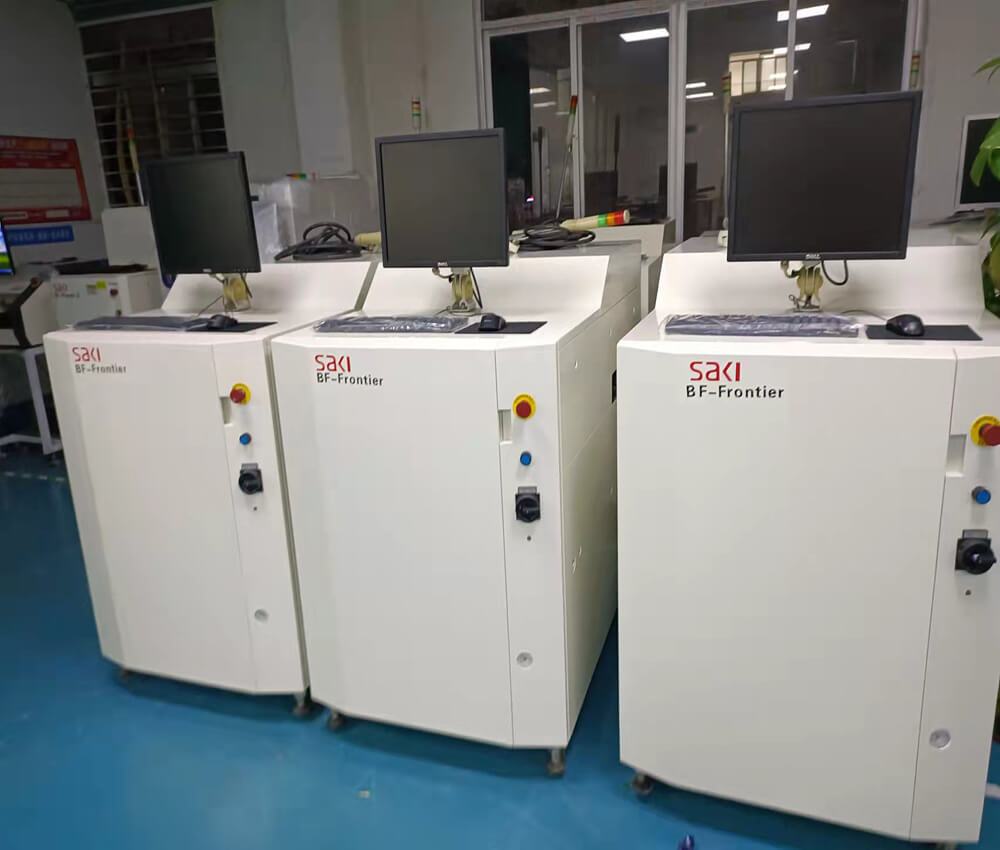
3D AOI Technology
Just as with 2D AOI, Saki has been in the forefront of 3D AOI development. Saki has now introduced its 3rd generation AOI systems. These flexible and adaptable, high-quality, cost-effective systems can be used for simple verification to full algorithm-based measurements.
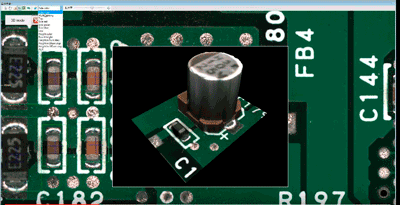 Saki’s systems don’t just inspect, they measure components with a height range between 0 and 20mm, achieving 1-micron height resolution and a false call rate of less than 100 ppm with 0 escapes for the highest level of quality and accuracy in the industry. Measurement results are evaluated in real time and combined to automatically generate a height map. Real measurement data can be obtained even inside a shield case or between connectors. True height measurement enables actual verification of defects and gives greater inspection, measurement, and reliability than 2D AOI.
Saki’s systems don’t just inspect, they measure components with a height range between 0 and 20mm, achieving 1-micron height resolution and a false call rate of less than 100 ppm with 0 escapes for the highest level of quality and accuracy in the industry. Measurement results are evaluated in real time and combined to automatically generate a height map. Real measurement data can be obtained even inside a shield case or between connectors. True height measurement enables actual verification of defects and gives greater inspection, measurement, and reliability than 2D AOI.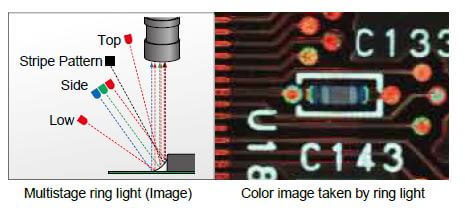 Reliability of height data greatly depends on accurate measurements of the substrate surface. Saki’s 3D-AOI machines utilize warpage reference measurements from various locations throughout the board to automatically measure and correct for substrate warpage. Using this approach, accurate height measurement is possible without being influenced by the layout of adjacent parts, even when library data based on imported CAD data is added to the substrate. A correction is performed in all three directions -- X, Y, and Z -- so that the inspection data and the image automatically match.
Reliability of height data greatly depends on accurate measurements of the substrate surface. Saki’s 3D-AOI machines utilize warpage reference measurements from various locations throughout the board to automatically measure and correct for substrate warpage. Using this approach, accurate height measurement is possible without being influenced by the layout of adjacent parts, even when library data based on imported CAD data is added to the substrate. A correction is performed in all three directions -- X, Y, and Z -- so that the inspection data and the image automatically match.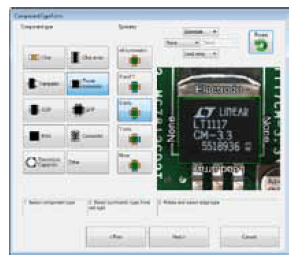 One factor that differentiates Saki is the proprietary capability to capture large field-of-view images and automatically combine them into one continuous, seamless data image for accurate and precise programming and positioning. CAD data can be easily entered. Since large areas are inspected in a single field-of-view (FOV), the system automatically detects the surface of the sample and sets height zero reference points for each area block. Users can generate and manage their inspection data without concern for any additional adjustment for FOV joints.
One factor that differentiates Saki is the proprietary capability to capture large field-of-view images and automatically combine them into one continuous, seamless data image for accurate and precise programming and positioning. CAD data can be easily entered. Since large areas are inspected in a single field-of-view (FOV), the system automatically detects the surface of the sample and sets height zero reference points for each area block. Users can generate and manage their inspection data without concern for any additional adjustment for FOV joints.ECD (Extra Component Detection)
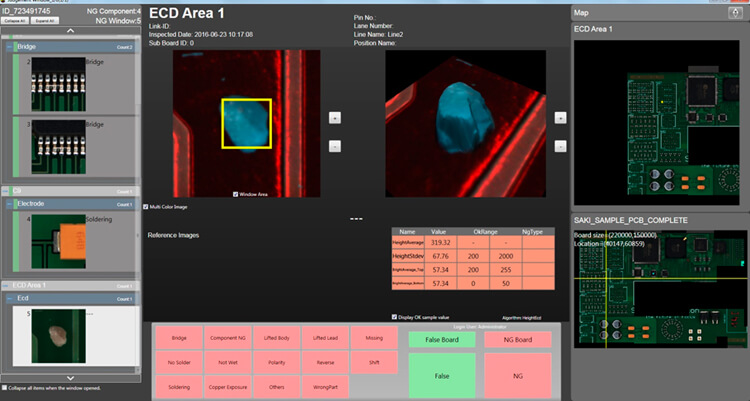
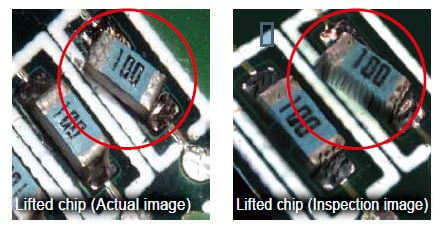 Saki’s proprietary, easy-to-use and program software enables programming and debugging off-line and the unique ability to make program corrections in real time. Saki’s BF2 software allows a user to create inspection logic flexibility by combining 3D and 2D on top of existing Saki standard inspection logic to deal with new components and new failures in lines. Saki’s latest hardware realizes a further optimization of takt time by employing high-speed gantry and GPU calculations for an even faster scanning system.
Saki’s proprietary, easy-to-use and program software enables programming and debugging off-line and the unique ability to make program corrections in real time. Saki’s BF2 software allows a user to create inspection logic flexibility by combining 3D and 2D on top of existing Saki standard inspection logic to deal with new components and new failures in lines. Saki’s latest hardware realizes a further optimization of takt time by employing high-speed gantry and GPU calculations for an even faster scanning system.Inspection Capabilities: 2D and 3D
| Inspection Categories | 2D | 3D |
|---|---|---|
| Bent Lead | ✔ | ✔ |
| Billboarding | ✔ | ✔ |
| Bridging | ✔ | ✔ |
| Coplanarity | ✔ | |
| Copper Exposure | ✔ | ✔ |
| Damaged Components | ✔ | ✔ |
| Defective/Damaged Components | ✔ | ✔ |
| Dry Joints/Absence of Solder | ✔ | ✔ |
| Excess Solder | ✔ | ✔ |
| Fillet Defect | ✔ | ✔ |
| Foreign Material | ✔ | ✔ |
| Gold Finger | ✔ | ✔ |
| Height Defects | ✔ | |
| Inclined Components | ✔ | |
| Incorrect Component | ✔ | ✔ |
| Insufficient Solder | ✔ | ✔ |
| Inverted | ✔ | ✔ |
| J-leads | ✔ | |
| Lifted Chip | ✔ | |
| Lifted Lead | ✔ | |
| Misalignment | ✔ | ✔ |
| Missing Components | ✔ | ✔ |
| OCR/OCV | ✔ | ✔ |
| Offset | ✔ | ✔ |
| Orientation/Polarity | ✔ | ✔ |
| Package Height | ✔ | |
| Paste Registration | ✔ | ✔ |
| Polarity (Chip & IC) | ✔ | ✔ |
| Presence/Absence | ✔ | ✔ |
| Skew | ✔ | ✔ |
| Solder Ball | ✔ | ✔ |
| Through-Hole Pins (PTH) | ✔ | ✔ |
| Tombstoning |
Contact: Nancy
Phone: 13235536784
E-mail: [email protected]
Whatsapp:0086-13235536784
Add: No. 108 Fuyuan Street, Fenghuang Community, Fuyong Street, Baoan District, Shenzhen
We chat